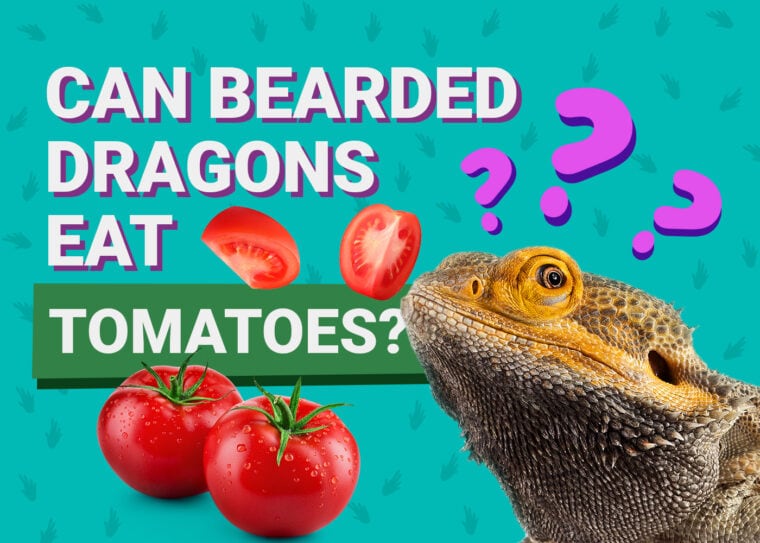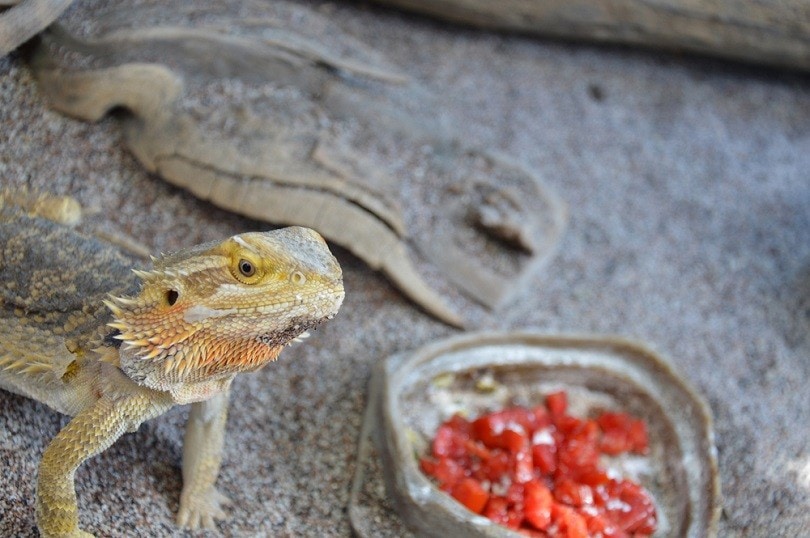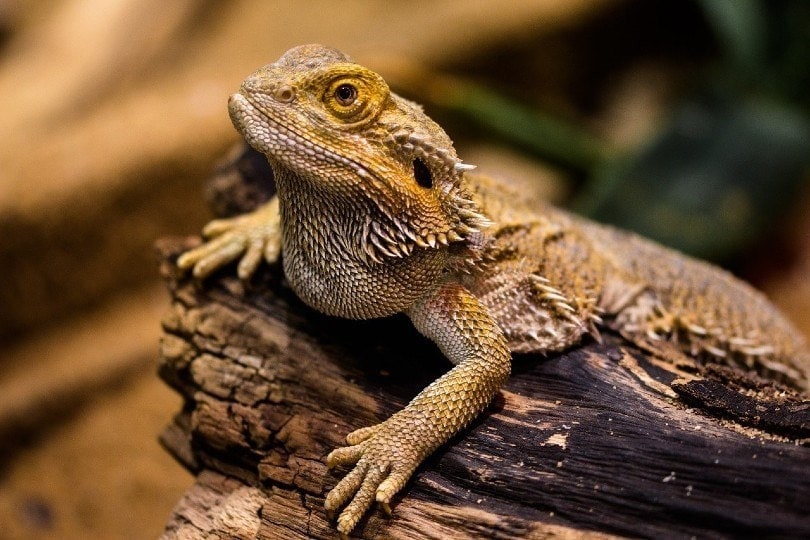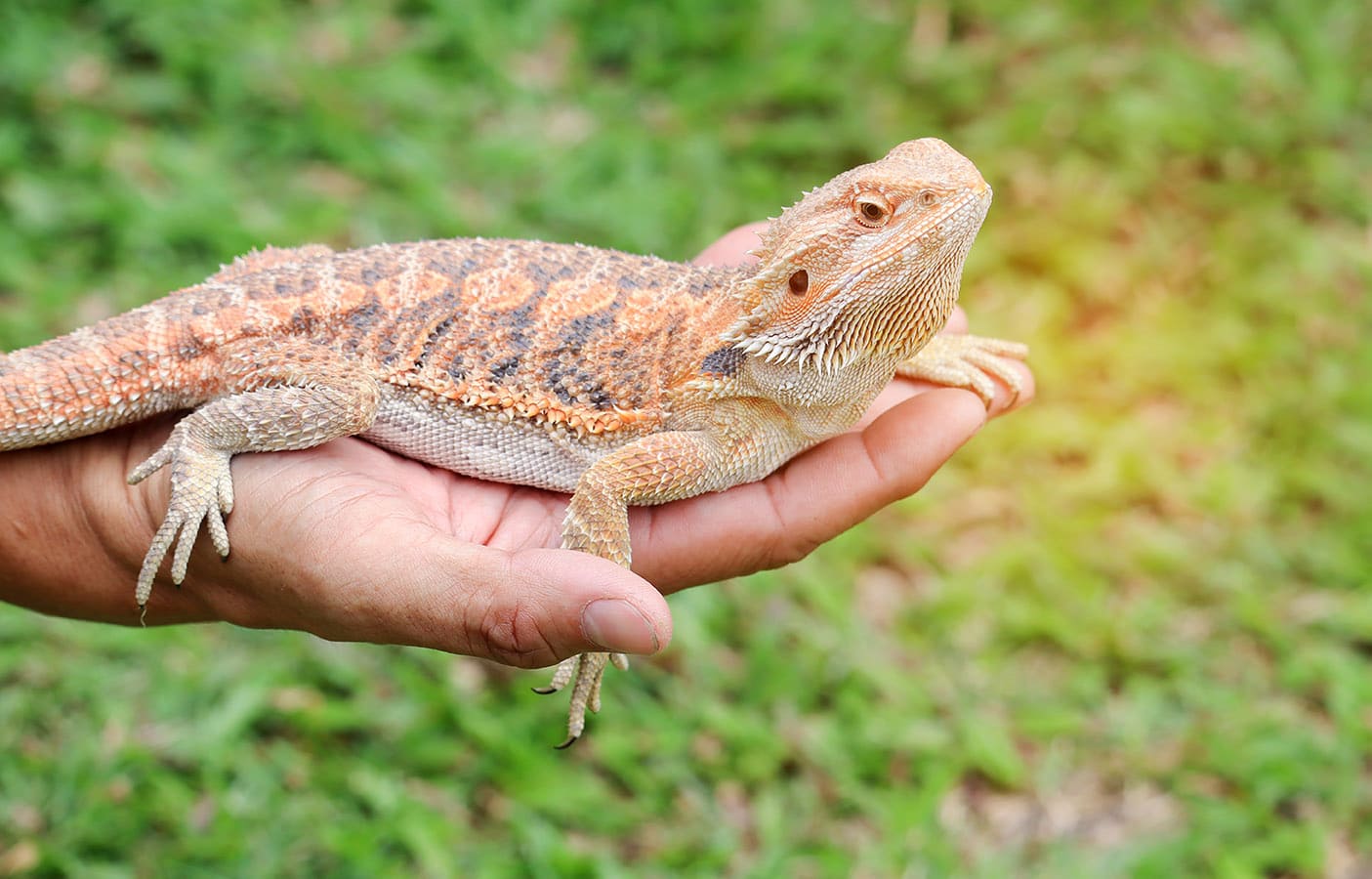
Click to Skip Ahead
Bearded dragons have a versatile diet that includes insects, vegetables, and fruits. Many fruits fall into the category of being safe for bearded dragons to eat. For example, bearded dragons can eat a tomato safely in small portions, though it isn’t the best fruit in terms of its nutritional profile. You do have to be careful when you feed tomatoes to your bearded dragon. There is a proper way to serve them, and the frequency needs to be sparing.
If you want to know more about the nutritional benefits and risks of tomatoes, how to serve tomatoes to a bearded dragon, and your other options, keep on reading.
Are Tomatoes Safe for Bearded Dragons?
Raw, ripe tomatoes are safe for healthy bearded dragons and not considered toxic.
Bearded dragons should not eat the stems or leaves of a tomato plant, and they shouldn’t nibble on the vines or flowers either. Tomatoes are part of a family called Solanaceae (better known as nightshades). These plants naturally possess poisonous glycoalkaloids. In the tomato plant, these alkaloids are most concentrated in the stems, leaves, and raw fruit. It is drastically reduced as a tomato ripens. While there is little evidence of tomato toxicity in veterinary medicine literature, it is still recommended that you don’t feed your bearded dragons any parts of the fruit that contain these glycoalkaloids.
In tomatoes, the glycoalkaloids of interest are solanine and tomatine.

Nutritional Benefits of Tomatoes for Bearded Dragons
Fruit is considered the least important part of a bearded dragon’s diet. Wild bearded dragons tend to eat more vegetables than fruits, and their slightly higher sugar content (compared to vegetables) makes them less appealing as far dietary additions are concerned. Basically, fruits should be considered treats. That said, in moderation, fruits are fantastic additions to a bearded dragon’s diet.
Like all fruits, tomatoes offer a few nutritional benefits for bearded dragons.
Tomatoes contain other vitamins and minerals, though most of them aren’t as significant from a nutritional standpoint (but may be beneficial in certain circumstances). For example, while tomatoes are often touted for their vitamin C content, healthy bearded dragons don’t benefit much from this, as they can make their own vitamin C. However, a bearded dragon that is ill or has liver issues might benefit from vitamin C supplementation in their diet.
Risks of Feeding Tomatoes to Your Bearded Dragon

The risks of feeding tomatoes to your bearded dragon can often make it seem more dangerous than it is worth.
The main reason that a tomato isn’t recommended as a dietary staple in a bearded dragon’s diet is its calcium-to-phosphorus ratio. For healthy adult bearded dragons in maintenance, their diet should have a calcium-to-phosphorus ratio of anywhere between 1.5:1 and 2:1. This means the calcium should be around twice as much as the phosphorus. The recommended ratio for juveniles is around 2:1, and dragons that are breeding (particularly females) require a much higher calcium intake compared to adults in maintenance.
In tomatoes, the calcium is much lower than the phosphorus, typically around 1:3.6. Phosphorus balance in the body requires that it be in the correct proportion with calcium. It binds to calcium, so when a bearded dragon is fed high amounts of phosphorus, their body responds by pulling calcium out from the bones to restore the proper levels of minerals and reduce the excess phosphorus in the bloodstream. Over time, the loss of calcium from bone mass can make the bones brittle and weak, leading to a condition called metabolic bone disease.
In addition, an inappropriate ratio of calcium to phosphorus is undesirable for the long-term health of a bearded dragon because it may predispose them to kidney or parathyroid issues. Therefore, tomatoes (like many other fruits) should be viewed as treats and not significant components of their daily salad servings.
Digestive issues may be observed if you feed too many tomatoes to your bearded dragon. The high water content of most fruits means consuming large numbers of them in a short span of time can lead to digestive distress that often manifests as episodes of diarrhea.
How to Serve Tomatoes to Your Dragon and How Often
Tomatoes are not the best treats for your bearded dragon, but these reptiles can have them and stay healthy as long as they do not eat tomatoes too often. Like most fruits (which should be considered treats), a small serving of tomato about once a month is acceptable for healthy adult bearded dragons.
Removing the skin from the tomato is also an acceptable option. While this does slightly reduce the nutritional value of the tomato, the trade-off is worth it because fruits shouldn’t be a big part of their diet, anyway.
Other Fruit and Vegetable Alternatives for Bearded Dragons
You may have decided that it is not worth it to give your beardie a taste of tomato. Take heart knowing that there are plenty of alternative fruits and vegetables that you can try instead.
Remember that healthy fruits and vegetables, especially dark leafy greens, should be a staple of your beardie’s diet. To ensure that they are getting the right amount and frequency of feeding, make a feeding schedule. Feeding them the best food of the proper amount is a great way to be a responsible dragon owner.
Final Thoughts
Owning a pet means you want to make sure you provide them the best care. And this includes what you feed them! We hope this article has given you some insight into if you should feed your beardie tomatoes. As you can see, it is probably best to skip this food and opt for something more suitable for your bearded dragon.
- You may also want to read: Do Chickens Have Teeth? How Do They Eat?
Featured Image Credit: Lernestorod, Pixabay









